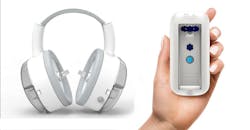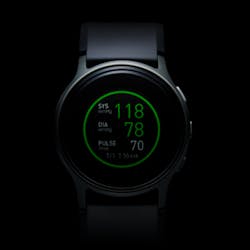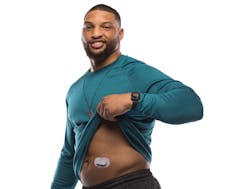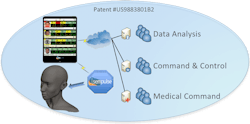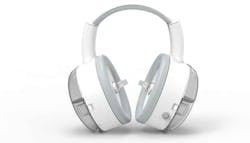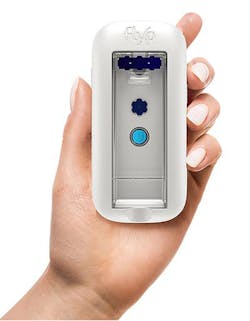It’s no secret that increasing healthcare costs and an aging population are taxing the U.S. healthcare industry and exacerbating a skills gap within the medical industry. While automation and IoT are helping to alleviate the manufacturing skills gap, some companies are working on similar technologies to aid the medical industry. The following presents trends and products OEMs and doctors are hoping will lighten the workload of an aging population.
Predictive Health
There are some general similarities between manufacturing and medical technology. Connectivity and data are important to applications in both industries. Having platforms to turn the data into information and offer user-friendly graphic user interfaces and dashboards add a lot of value. One of the benefits connectivity, data, and platforms offer manufacturing and medical industries is predictive maintenance.
Predictive maintenance in manufacturing can give engineers or technicians the option to plan when to service machines before a serious failure occurs. This limits downtime and prevents failures. The same is true in the medical field, only the “machines” are people.
Reducing the need to come into the doctor’s office could greatly reduce demands on medical staff. There are technologies such as smart watches, fitness bands, and industrial medical sensors that can send data from a wearable device to a smartphone or directly to an online platform. The key is getting these devices to work accurately for a patient’s everyday life and be capable of following HIPPA and other regulations.
The Omron smart watch is just one of many such devices jockeying for position to become the top health monitor smart device. However, accurate blood pressure is difficult to measure without obtaining the traditional systolic and diastolic numbers. Experts are guessing current devices advertising blood pressure are accomplishing a reading with a calibration based on the person’s pulse and volume of blood flow.
An early indicator of health problems medical professionals use is measuring a patient’s blood pressure. A sphygmomanometer (blood pressure cuff) and stethoscope are traditionally used to manually measure blood pressure, and there are devices that automate the process. However, unless people have a reason to purchase an automatic blood pressure cuff, they probably won’t. According to CNBC, “Tracking blood pressure outside of the doctor’s office is a very big deal. Hypertension affects about one-third of Americans, and is linked with heart disease, strokes, kidney disease, and all sorts of other complications when it isn’t properly managed. So any company that can figure out a way to make it easier to measure without a cuff could crack open a massive multi-billion dollar market.”
While this is a big deal, at-home care has challenges. First is people’s willingness to not only participate, but also to use devices properly. Additionally, devices will need to be user-friendly. The more training or steps a user needs to follow to obtain accurate results, the less likely users are to get accurate results, or even use the device.
As noted, many technology companies are working on using watches or fitness bands to monitor health. Many people are familiar with these watches and don’t mind wearing them. However, with many technology companies working on health applications, the wrist is becoming a valuable piece of real estate.
Diabetes is a growing problem in the U.S. Being able to monitor glucose levels in real time—or in Dexcom’s example, every five minutes—offer more data points and facilitates better treatment.
This competition for wrist space has some companies finding how to seamlessly work medical devices into other areas. There are some wearable sensors that can be worn on the stomach. Dexcom has received an FDA approval for a continuous glucose monitor that can help the tens of millions of people in the U.S. Other stomach wearables can monitor infant and personal health for pregnant women.
This may create problems as the market is increasingly a mix of professional and commercial grade devices. This might create confusion to what information a user should follow. Also, if a device isn’t calibrated or used properly, it could increase communication or visits with medical professionals. Worse yet, a patient might not seek medical attention if a device is not working properly, or if the patient doesn’t trust it due to previous false readings. The overall goal for the medical industry seems to be to maintain or improve patient health while reducing demand on medical offices and hospitals. This goal is possible with properly used, accurate devices that communicate authentically with people.
Medical Paperwork
For individuals requiring hospitalization, monitoring systems will continue to evolve. New tools are being designed to maximize the medical efficiency of today's triage and monitoring procedures.
Sempulse is a monitoring device that is working to monitor and help first responders. Targeting military and disaster management (in addition to personal use), a small device worn behind the ear can monitor a person’s vitals. With automated patient vital signs data, the software prioritizes patients based on pre-determined and adjustable thresholds, their calculated Injury Severity Scores (ISS), and a pattern recognition analysis of each patient’s bio-signals against known historical cases with outcomes.
Being able to communicate with an unconscious patient in times of crises and document actions taken in the moment can help patients. Additionally, it can improve the quality of documentation and reduce paperwork.
According to Sempulse, in mass-casualty events, incidents where the injured outnumber the available caregivers, first responders are forced to make subjective decisions due to a lack of tools and resources designed to deal with these kinds of events. Tending or evaluating each patient can take upwards of 5 to 10 minutes, and during these crucial moments other patients may not survive before they're evaluated.
Medical wearables could streamline first responders’ evaluation. Additionally, wearables could offer value in other ways, such as the ability to locate victims. Depending on how a device communicates, it could track people displaced from a large event such as a natural disaster. Wearables able to carry a patient’s information and vitals could also streamline and automate reports, patient’s history, allergens, and more.
Going paperless has a lot of benefit in streamlining production while maintaining or improving document control. However, regulations must be followed. There are platforms that are working on reducing time spent on paperwork in medical manufacturing. For example, Penumbra Inc., a global leader in interventional therapies, has selected Siemens Opcenter Execution Medical Device and Diagnostics (formerly known as Camstar Medical Device Suite) from Siemens Digital Industries Software to support its growing business and innovation goals. The solution, which enables paperless manufacturing in an FDA-regulated environment, will be the foundation for an operational platform designed to establish a more predictable manufacturing process and supply chain, while also providing the foundation for continued, rapid growth.
Moving from manufacturing to a patient focus, real-time patient data with digital medical platforms could help automate paperwork in the medical industry while following regulations to free medical professionals to focus on patients or more complex tasks. The medical field currently has electronic health records (EHRs) which can improve patient care and streamline other processes such as billing. In the future, advanced monitoring devices and platforms might be able to automate medical paperwork.
There is a growing demand for medical devices to require less training to lighten the demand on medical professionals, and some devices are trying to eliminate training altogether. This headphone device is working to eliminate the need for a doctor to administer a procedure to remove impacted ear wax from a patient’s ear.
With healthcare demands rising, the use of digital records and reports will likely increase. This may be partly due to the use of at-home devices and wearables that driving digital platforms to connect with medical professionals, and even insurance companies. Without following regulated guidelines and documentation, the data collected might not be able to be used in a professional setting.
Healthcare at Home
At-home care is nothing to be afraid of. Each year there are millions of doctor office visits for small, non-threatening procedures. In fact, about 12 million Americans visit the doctor every year for impacted earwax removal. In early 2019 Protolabs gave Otoset, a headset that can professionally clean a patient’s ear in 35 sec. the Cool Idea Award. The headphones have disposable silicone nozzles that spray a warm saline solution against the walls of the ear canal while extracting the solution and wax back into the nozzles and disposable outflow containers, avoiding messy spills. SafKan eventually plands to roll out a consumer version of the device that could reduce or eliminate the 12 million visits each year associate with this problem. For now, OtoSet is to be administered by healthcare providers.
The trend goes beyond ears. For example, this past September Convexity Scientific announced a $3.5 million series B financing in Advance of the Flyp Nebulizer launch. There are more than 50 million people in the United States suffering from asthma and chronic obstructive pulmonary disease (COPD). Acute exacerbations of COPD have resulted in nearly 1.5 million emergency room visits each year. At this scale and investment, medical care at home is expected to be a growing trend.
Designed with the end user in mind, Convexity Scientific’s Flyp is a pocket-portable nebulizer that was cleared by the FDA in 2017 and is designed to simplify the management of chronic respiratory conditions like asthma and COPD. An updated version of Flyp launched at the Medtrade home medical equipment expo in Atlanta on October 21, 2019. At the show Flyp won first place in the Innovative HME Retail Product Awards.
“The Flyp pocket-portable nebulizer can be used to effectively treat a range of lung-related conditions, including asthma, COPD and other common lung diseases,” said Ralph Finger, M.D., founder and chief medical officer of Convexity Scientific. “We started with a goal to help improve the life of one patient. Now, thousands use and benefit from Flyp Nebulizer daily.”
With a looming skills gap in medicine, technology is taking a similar approach to manufacturing to handle demand. Connecting to patients outside the office for monitoring can offer features such as predictive health. IoT--connected platforms can help follow regulations, make sense of real-time data and diagnostics, and reduce paperwork.
Additionally, automation and connected devices could reduce demands on larger facilities by developing easier-to-use, cost-effective tools that can be offered at smaller medical facilities or even at home. Medical trends will continue to produce easy-to-use wearables and devices that offer accurate medical data to decentralize healthcare.
